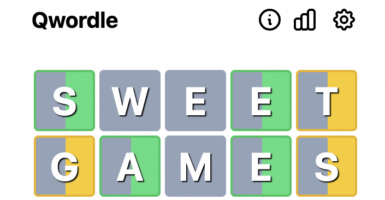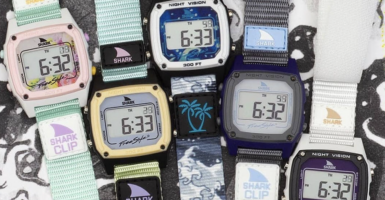Photos That Give A Rare Look At The Oval Office
The Oval Office is the U.S. president’s inner sanctum, the official working space used by the leader and a place to hold meetings and receive visitors.
Just like the presidency itself, the role of the Oval Office has evolved and changed over the years. Let’s take a close look at the history and inner workings of the president’s working space.
Presidents have a long association with oval rooms.
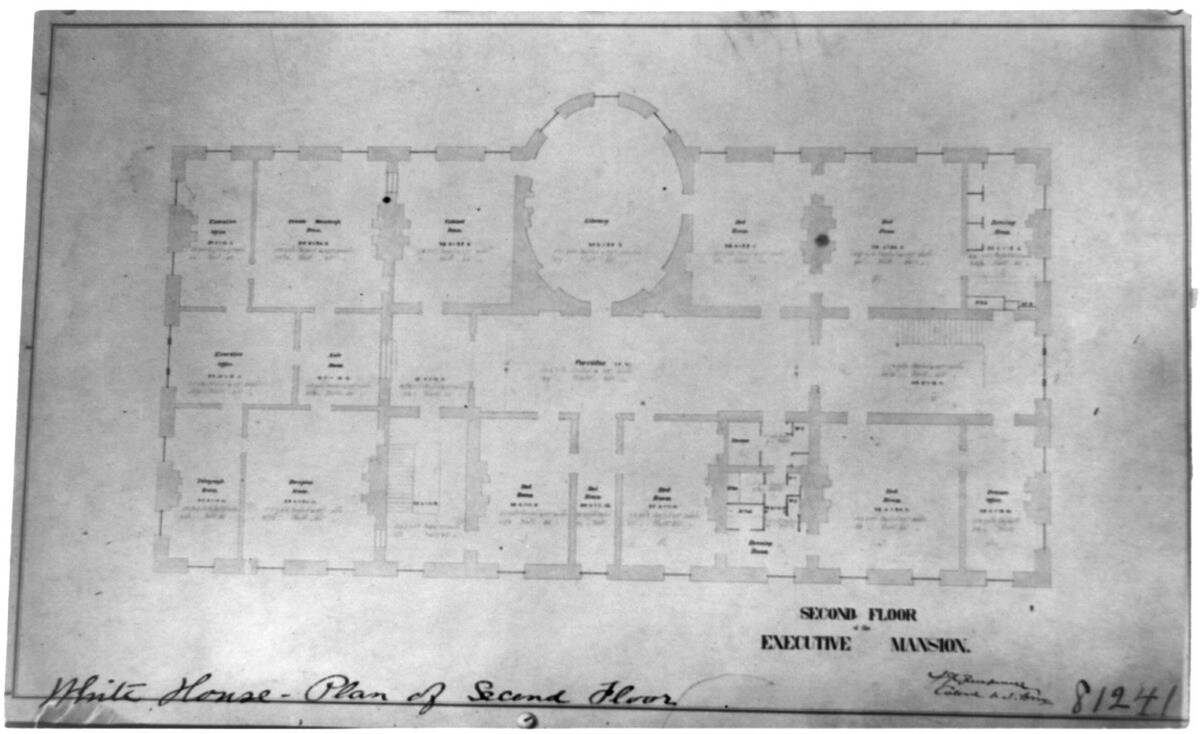
Beginning with George Washington adding a semi-circular window to President’s House in Philadelphia – an early presidential mansion – presidents have been associated with oval-shaped rooms.
This was echoed when architect James Hoban designed the White House with several oval rooms. In the 19th century, presidents used these rooms as private offices, libraries, and even salons.
Roosevelt and Taft are the reasons the West Wing exists.

The Executive Office Building, or West Wing, was the brainchild of President Roosevelt, who originally intended for it to be a temporary working space.
President Taft made the West Wing permanent around 1909, doubling its size. This is when the first Oval Office was added to the White House floorplan.
It was damaged by fire in 1929.
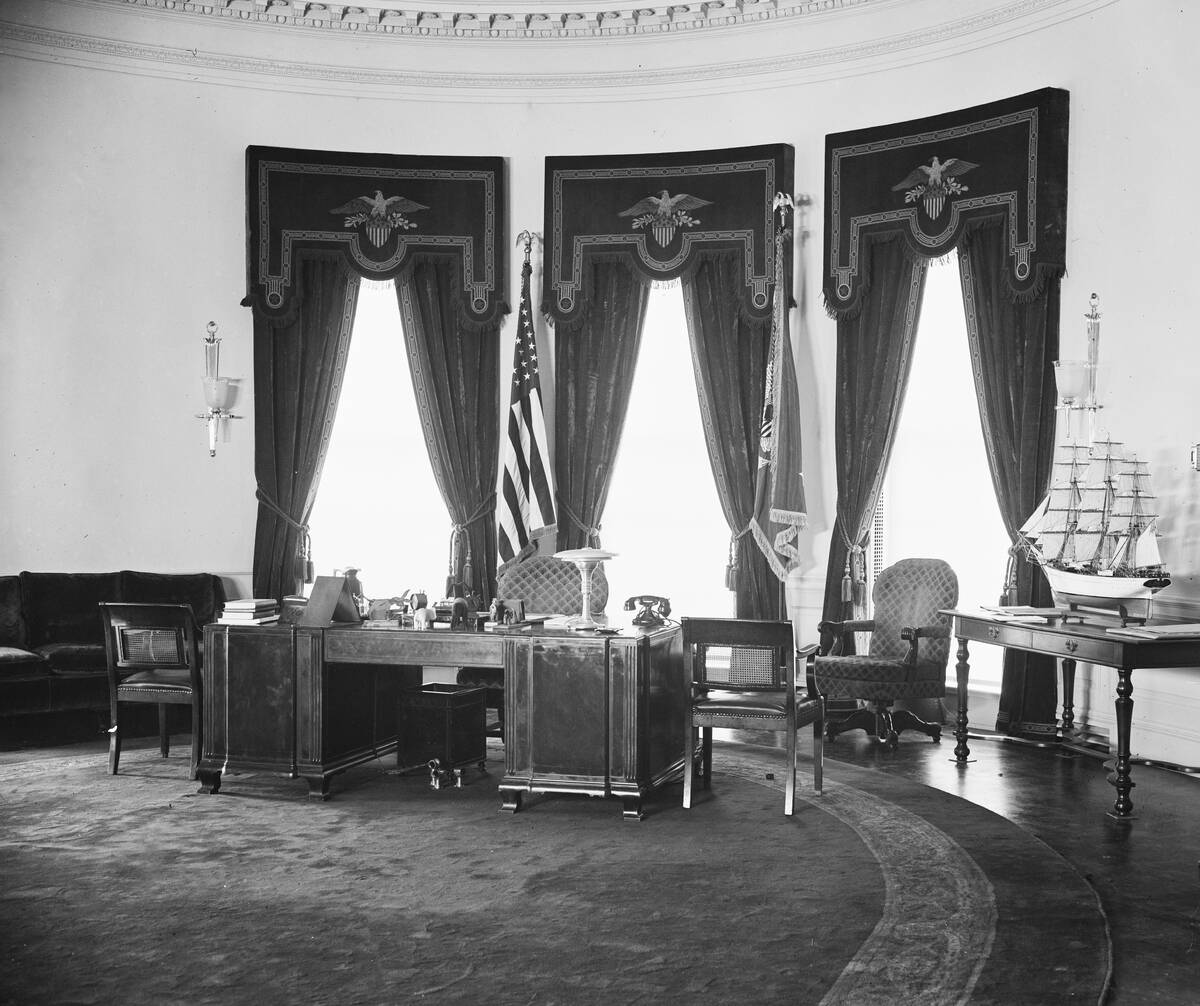
During the first year of the Hoover administration, the West Wing was damaged by fire. The rebuilding process created additional space for new staff offices while restoring the Oval Office.
This was a significant moment in the history of the Oval Office, as the original Taft-era room had not undergone any big changes in 20 years at that point.
FDR redesigned the space.
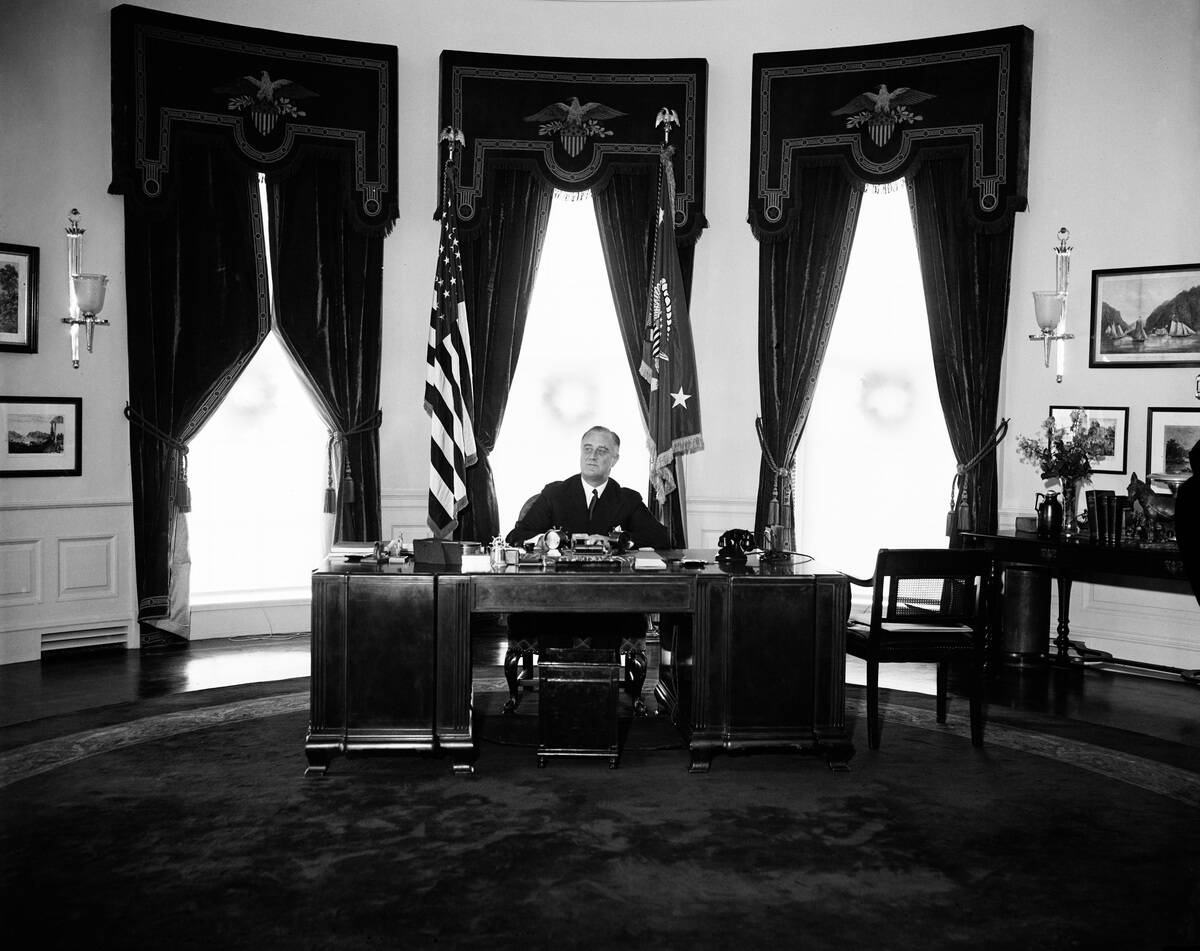
During the presidency of Franklin D. Roosevelt, the president hired architect Eric Gugler to further redesign the West Wing. This consisted of adding even more office space in the basement while adding a penthouse.
These additions created the same floorplan that’s largely intact today – but the addition of new offices into the existing space created narrow corridors and cramped offices for staff.
Each president makes the Oval Office their own.
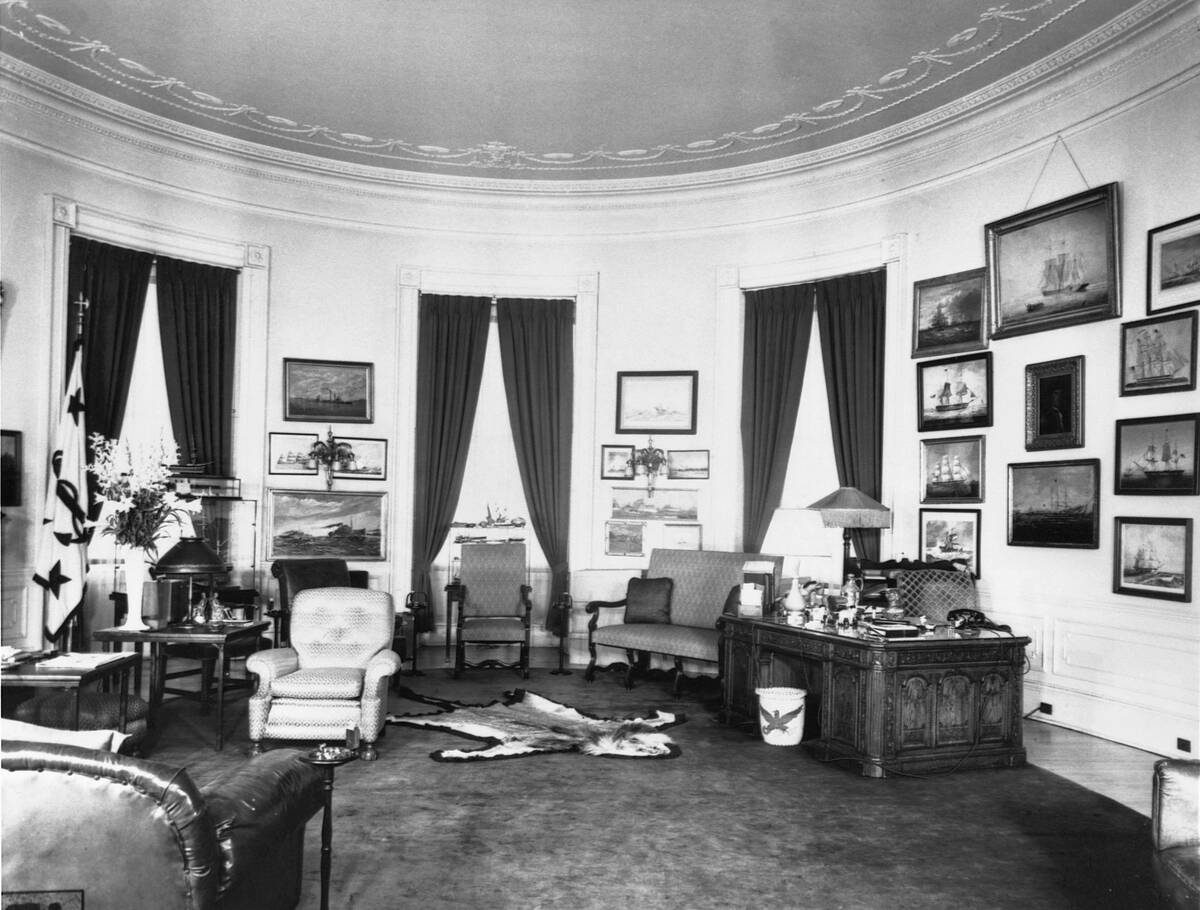
This look at the FDR-era Oval Office is broadly familiar to anyone who knows the modern office, but it’s still full of the president’s personal touches.
Of note are his collection of ashtrays on the desk, a small bust of his beloved mother, a map of the Caribbean Sea, various letter openers, and a telephone.
It’s a place for the president to receive guests.

The Oval Office is indeed a working office, and as such, the president may do solitary work in the office, or hold meetings, or host guests.
This 1950s photo shows President Eisenhower as he greets several guests: Republican gubernatorial candidate Malcom Forbes, his wife, and their four children.
Presidents have used it in different ways.
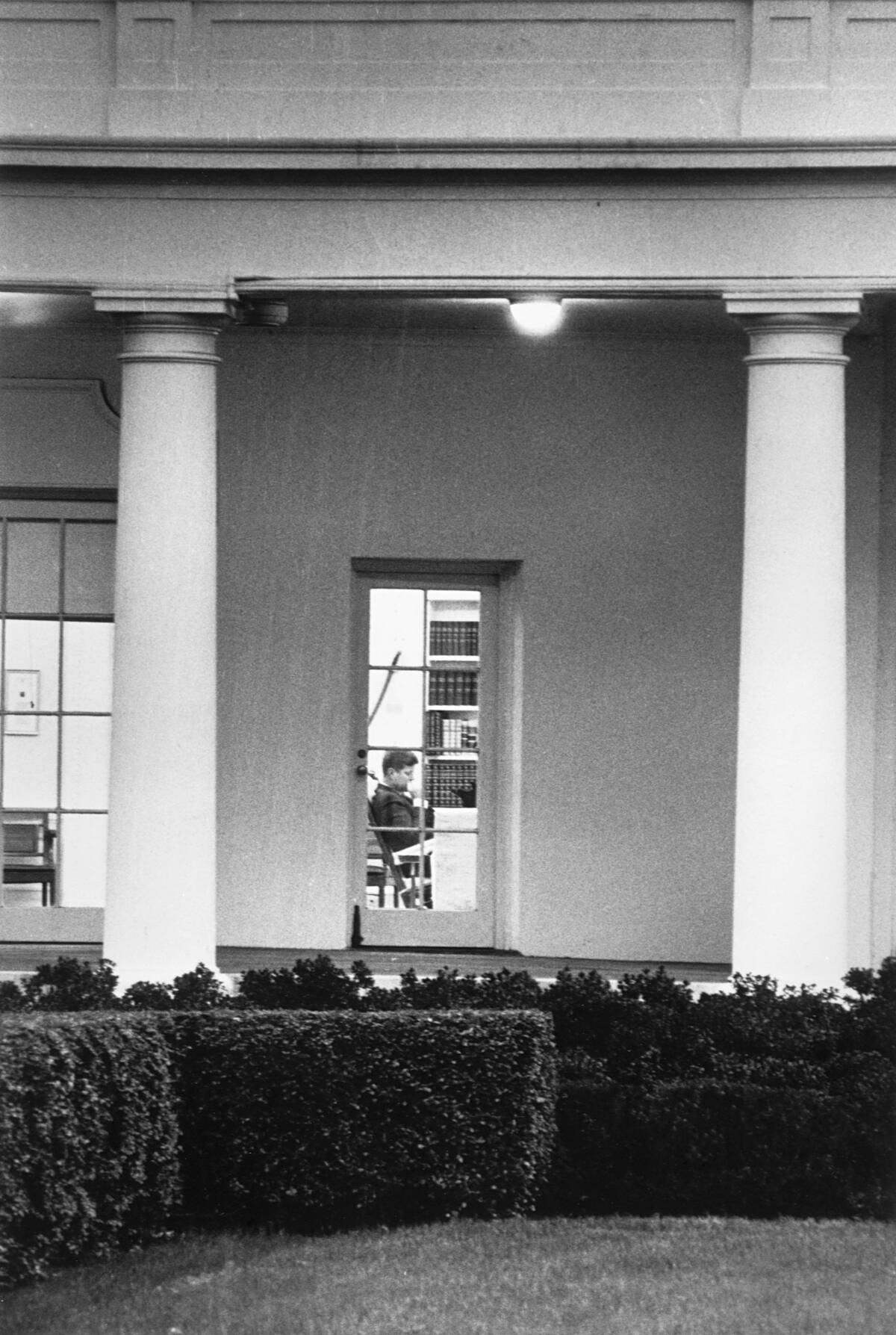
The physical size and location of the Oval Office have remained the same for decades, but every presidency has used the space in subtly different ways.
This shot of a solitary JFK shows that some presidents do indeed use it as their main workspace to get things done. Other presidents have favored other office spaces and use the Oval Office as a more ceremonial space.
The president’s desk is famous in its own right.
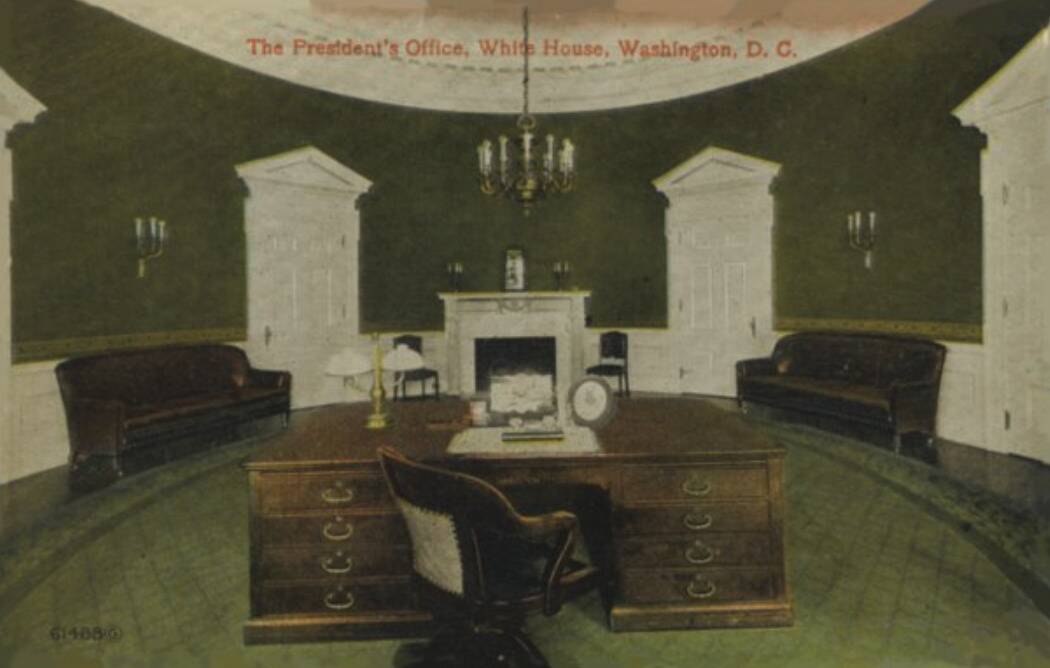
A grand office demands a grand desk, and the Oval Office desk is a grand desk indeed. In all, six different desks have been used since the modern Oval Office took shape.
This image shows the brand new Oval Office in 1909 with Theodore Roosevelt’s desk. This mahogany pedestal desk was used by other presidents as well, including Harry Truman. Since 1961, it’s been used by the vice president.
The Resolute Desk is the current model.
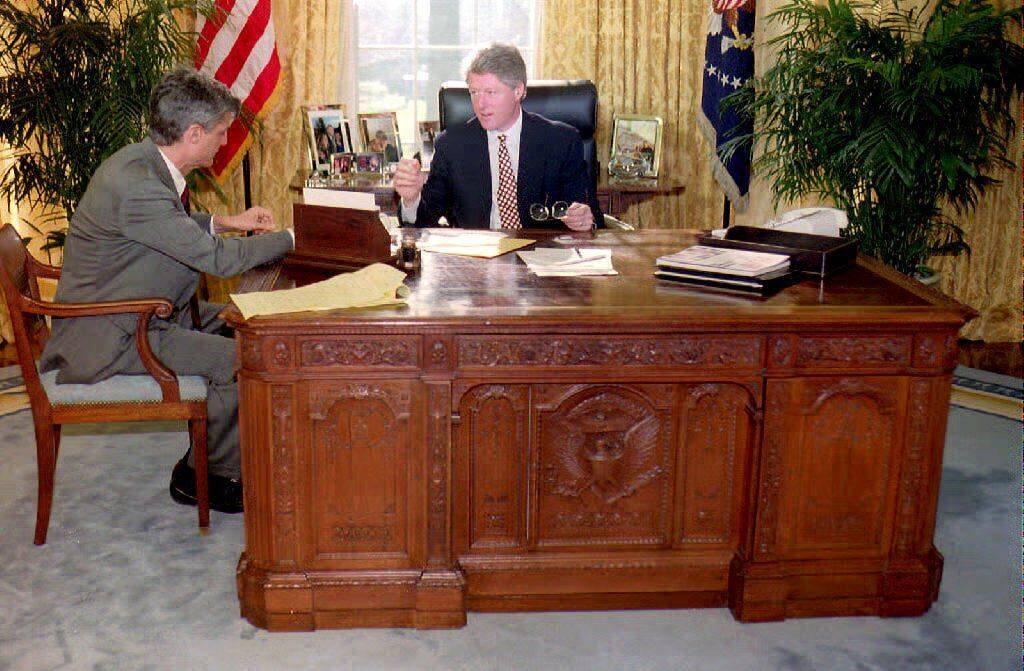
This desk was originally gifted to President Rutherford B. Hayes by Queen Victoria in 1880, and is named because it’s built from the oak timbers from the ship HMS Resolute.
It’s a massively heavy, 1,300-pound piece of furniture. Over the years, it’s proved to be the most enduring Oval Office desk, with the five most recent presidents all using it.
There’s mostly work, but also time for play.
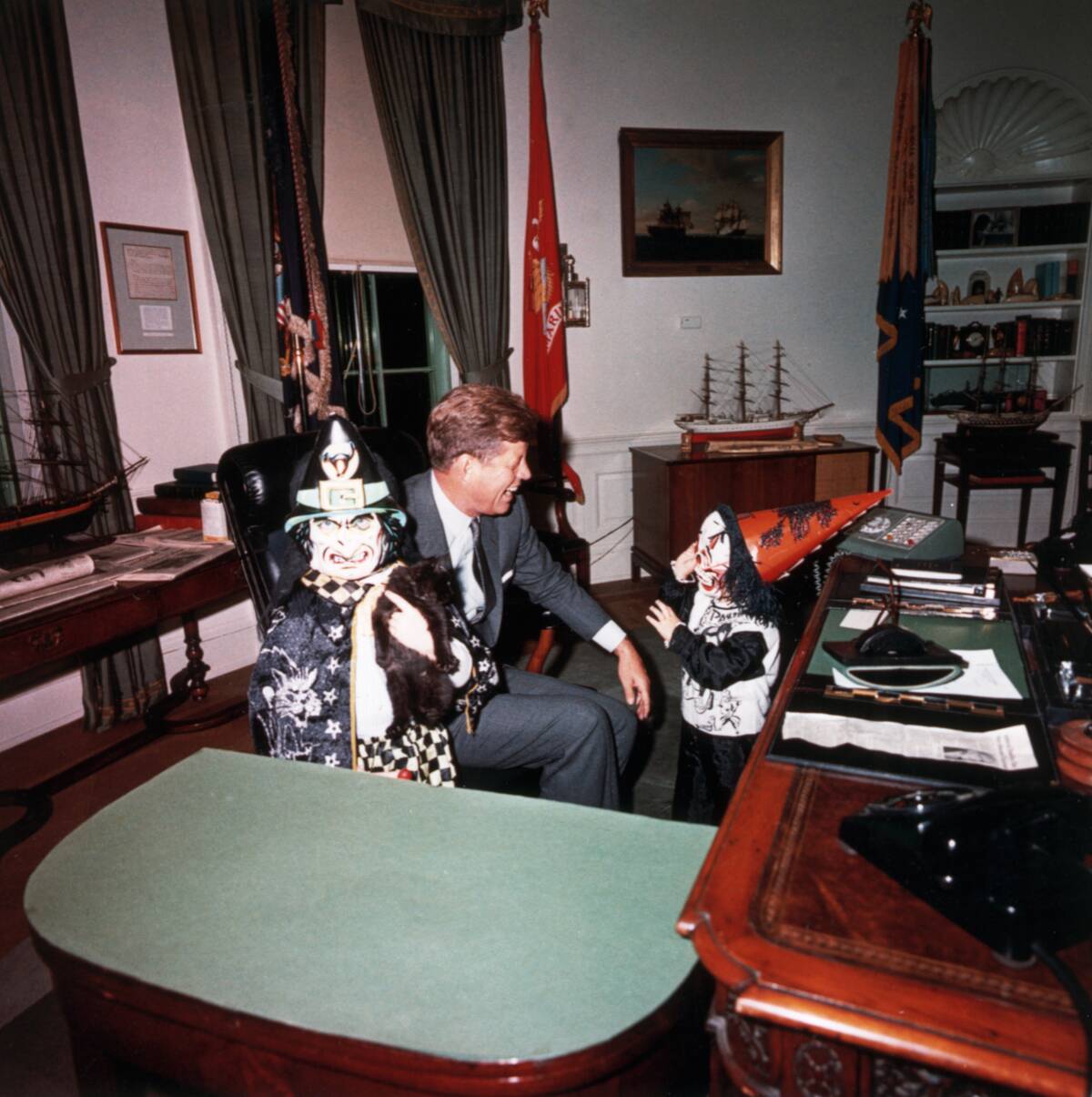
For presidents who have actively used the Oval Office and also have young families, the office has taken on a cozy domestic character at times in its history.
President Kennedy had two young children, Caroline and John Jr., who can be seen here with their dad in Halloween costumes back in 1963.
It’s both a private and public space.
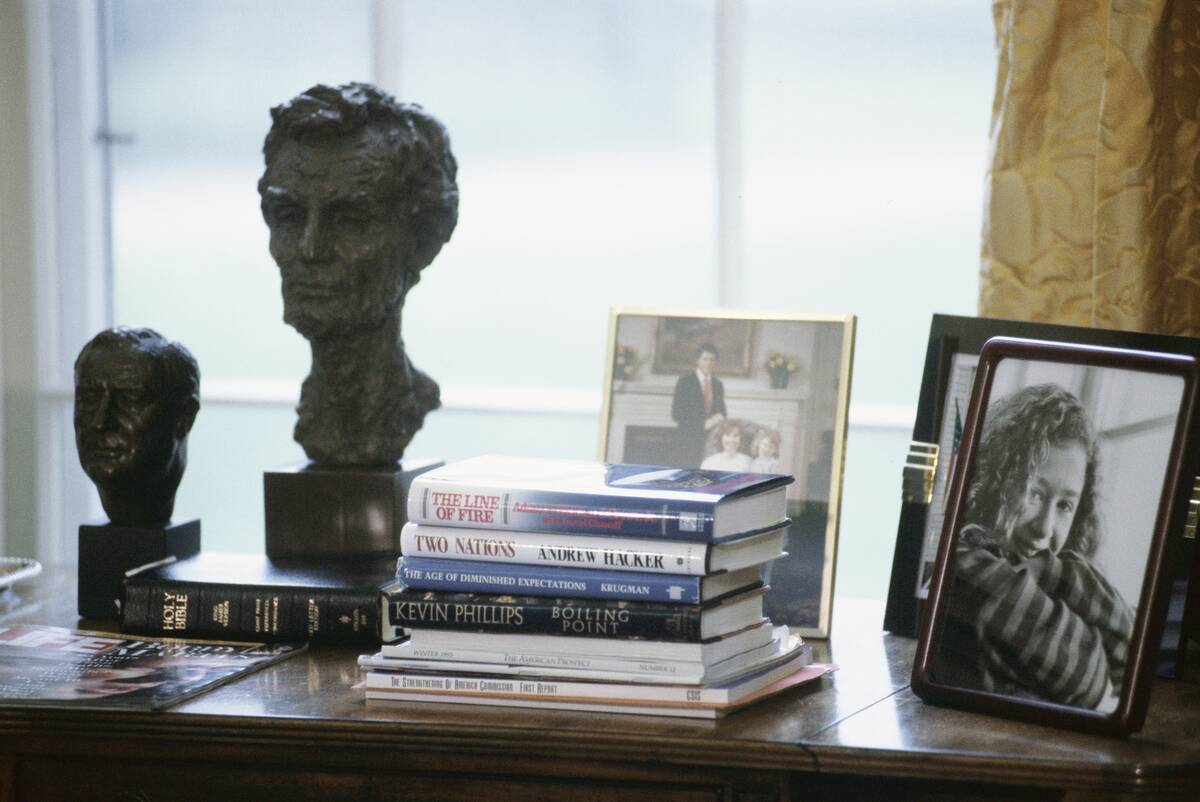
Even the presidents who haven’t used the Oval Office to get work done have generally utilized it as a space to receive visitors. As such, the decor needs to represent the sitting president.
This image of President Clinton’s desk shows busts of past presidents he admired, several of his favorite books, and the domestic touch of family portraits.
Artwork features prominently.
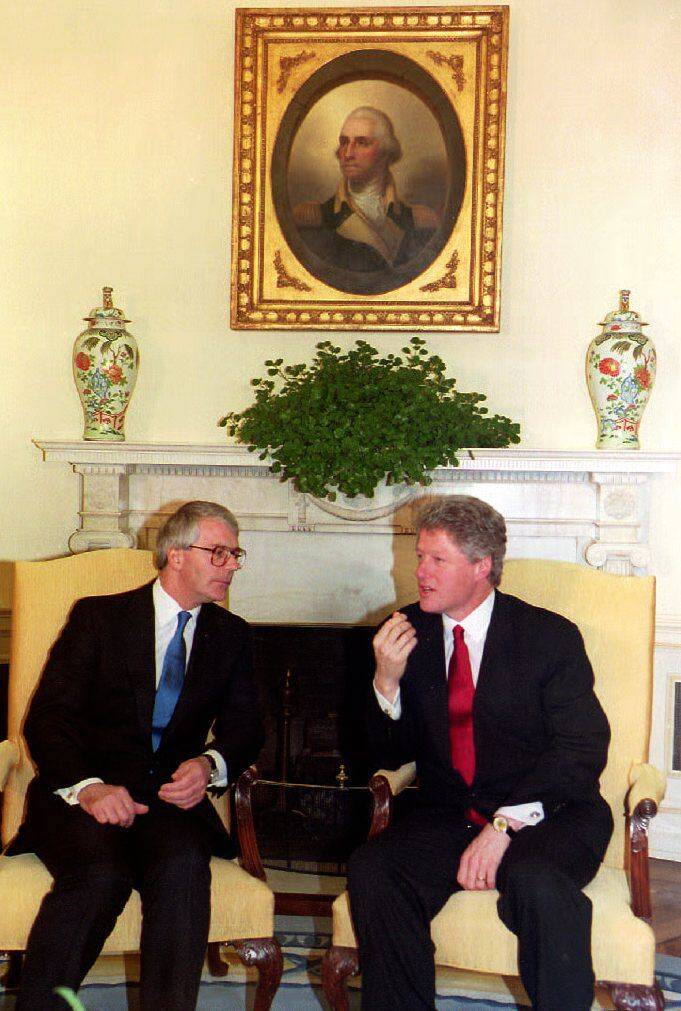
Each president has generally put their own artistic spin on their version of the Oval Office, but one constant has been a portrait of George Washington – even if the size and location of the portrait have shifted at times.
Other presidents pay tribute to past leaders who they have admiration for with portraits, busts, statuettes, and figurines.
It’s a place for citizens to be recognized.
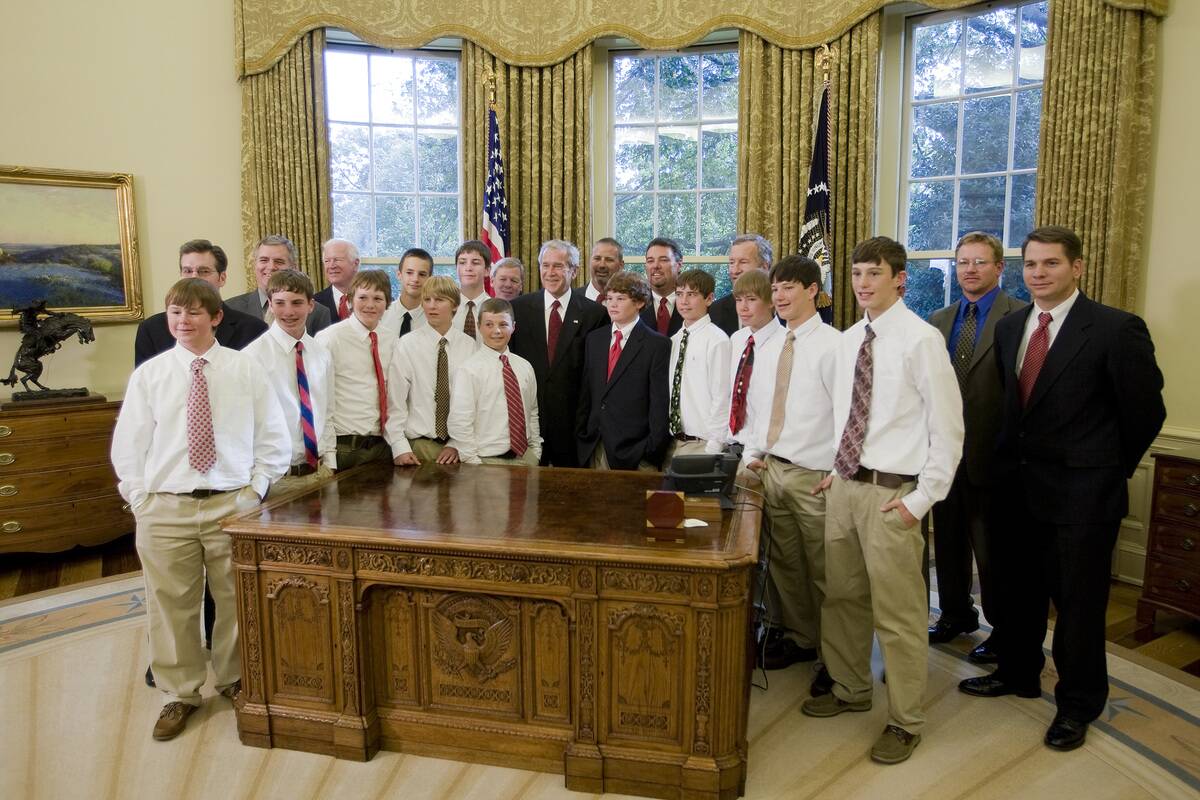
The Oval Office has generally been the site for any photo ops with notable private citizens. This can include people who’ve done heroic things, or – more recently – champion sports teams.
This 2007 photo shows President George W. Bush hosting the Little League team from Warner Robins, Georgia that had recently won the Little League World Series.
The carpet has changed over the years.

The carpeting in the Oval Office has changed with the times. Color photographs from the midcentury years reveal a muted color with no particular design or pattern.
This 1993 photo, showing the newly-redesigned Clinton Oval Office, shows something that became a modern trend: vivid carpets with bold, presidential designs.
Seating areas have changed with the times as well.

Another shot of the 1993 redesign shows how Bill Clinton envisioned the meeting area of the Oval Office. A blend of classical and ’90s can be seen in modern couches and more formal chairs.
As always, a portrait of George Washington silently watches over any meetings that may be taking place.
It’s been recreated many times.
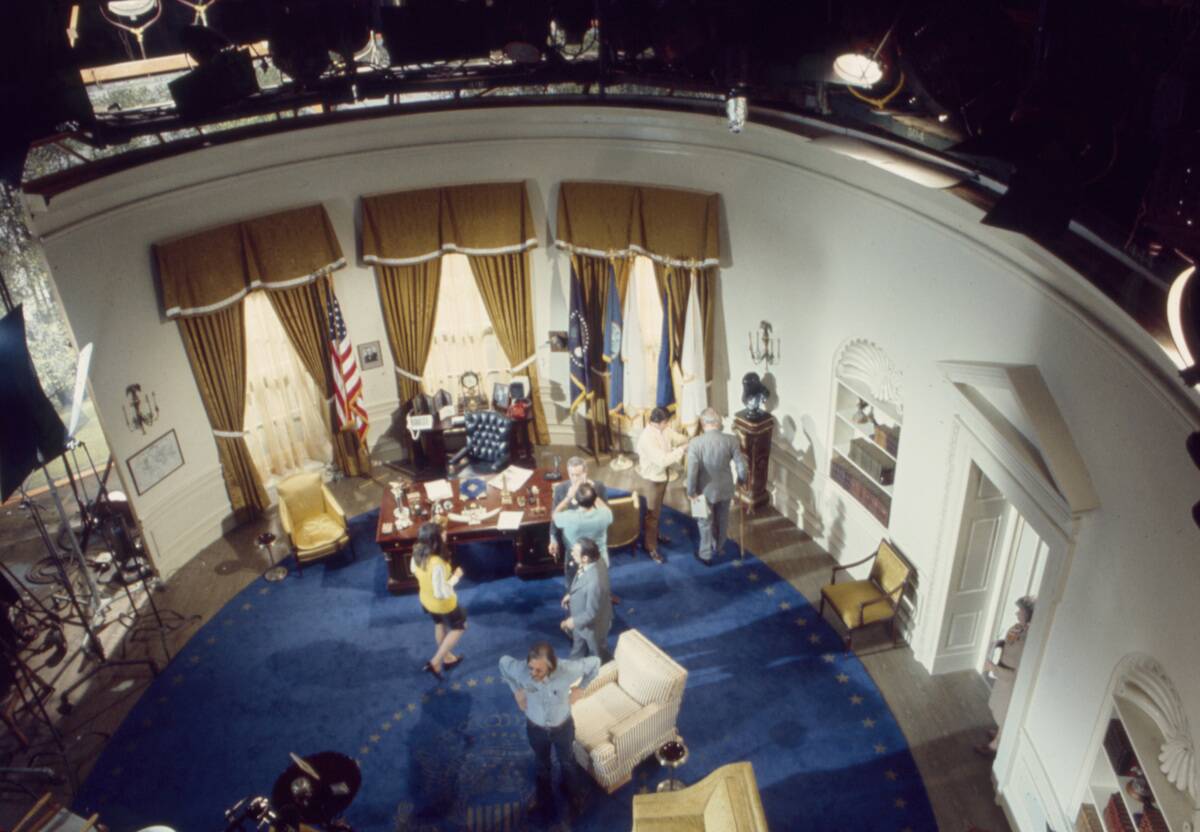
There’s only one true Oval Office, but thanks to the importance of the site, it’s been remade countless times across various movie sets.
This 1973 photo shows an Oval Office set that was constructed for the movie The President’s Plane is Missing. Other examples of notable Oval Office sets include Saturday Night Live and The West Wing.
It isn’t always a formal space.
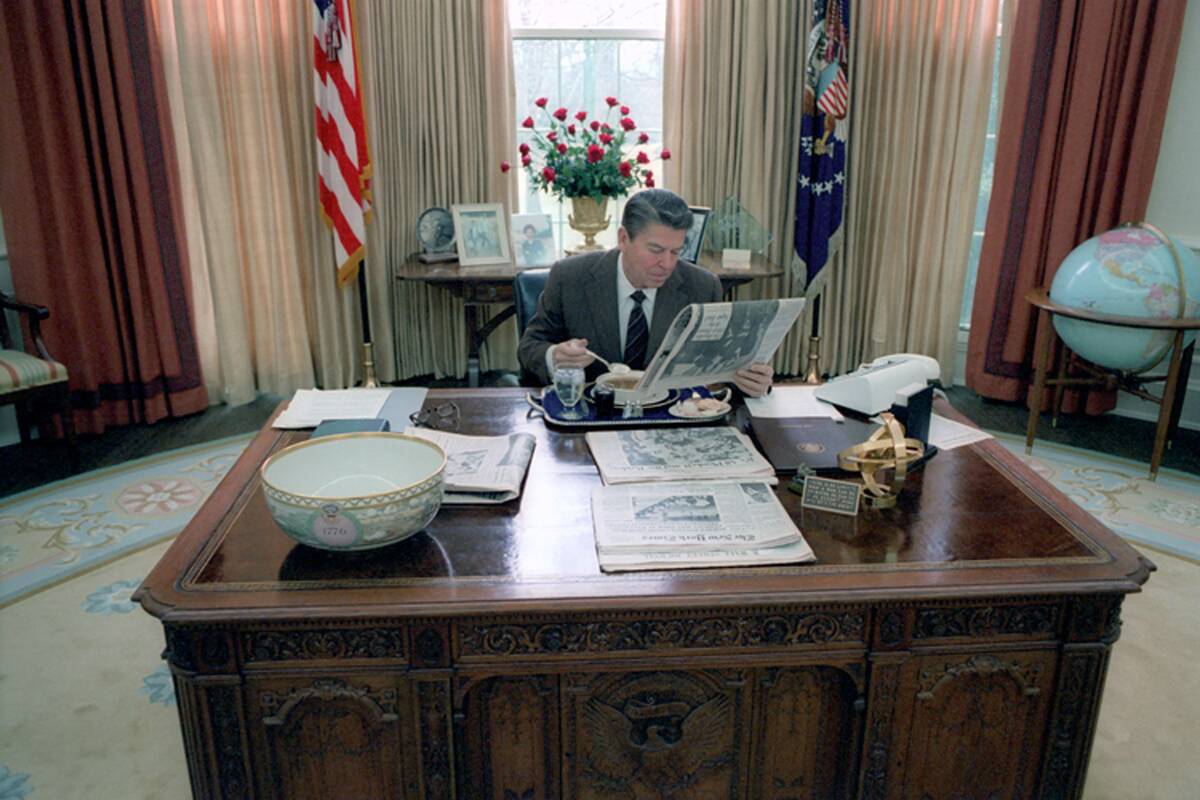
The Oval Office is an important room with an impactful history, but presidents aren’t always in formal mode. This was most notable during Richard Nixon’s profanity-laden rants that were recorded in the Oval Office during his presidency.
Images like this one, showing President Reagan eating lunch while catching up on the news, show a more relaxed side of the space.
It’s often a refuge for the president.

This image shows a pensive President Obama as he reflects on his presidency. At the time, he was alone in the Oval Office, preparing his final State of the Union address.
The president is a highly public figure who’s often flanked by other people – including inside the Oval Office. But when it’s time to get work done, the president has the option of shutting the doors and working alone.
It’s a place where impactful decisions are made.
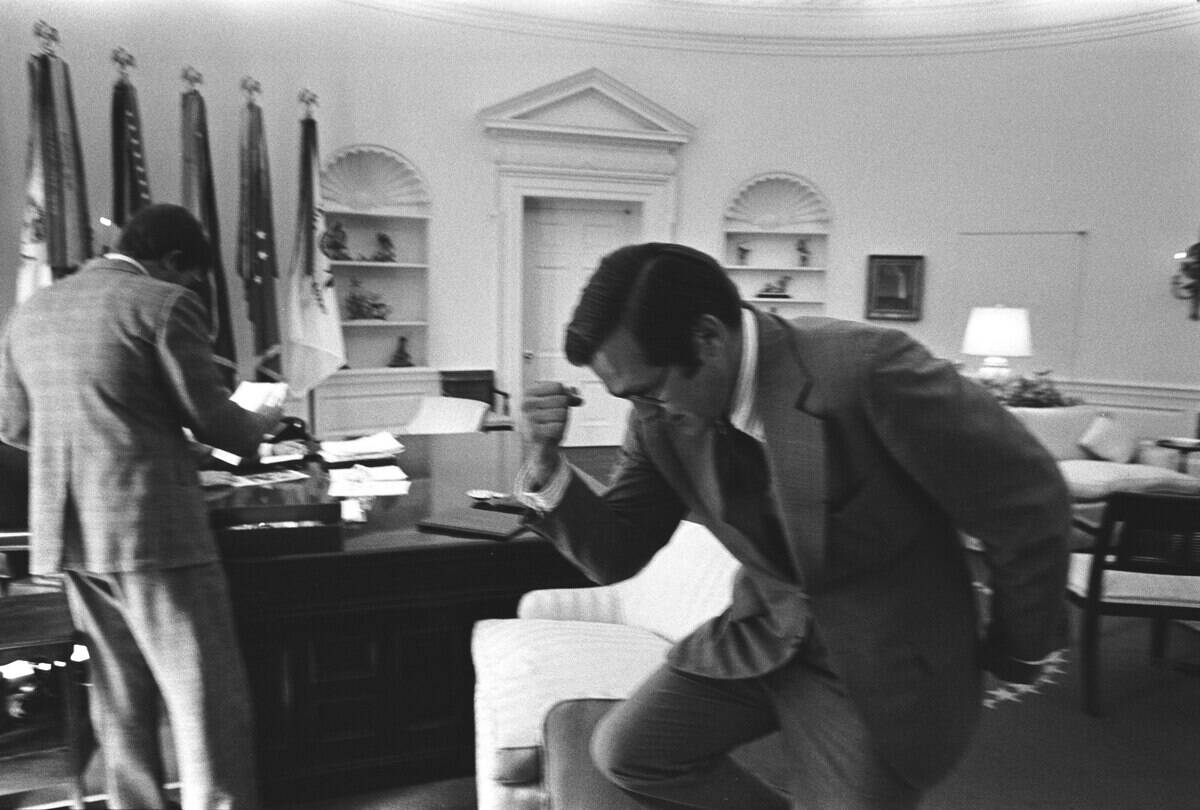
As often as the Oval Office hosts solemn ceremonies, it’s also an emotionally-charged space that plays host to no shortage of politically impactful meetings and negotiations.
This 1974 photo shows White House Chief of Staff Donald Rumsfeld as he exuberantly pumps his fist. There’s no word on what he was celebrating.
Rules on pets vary.
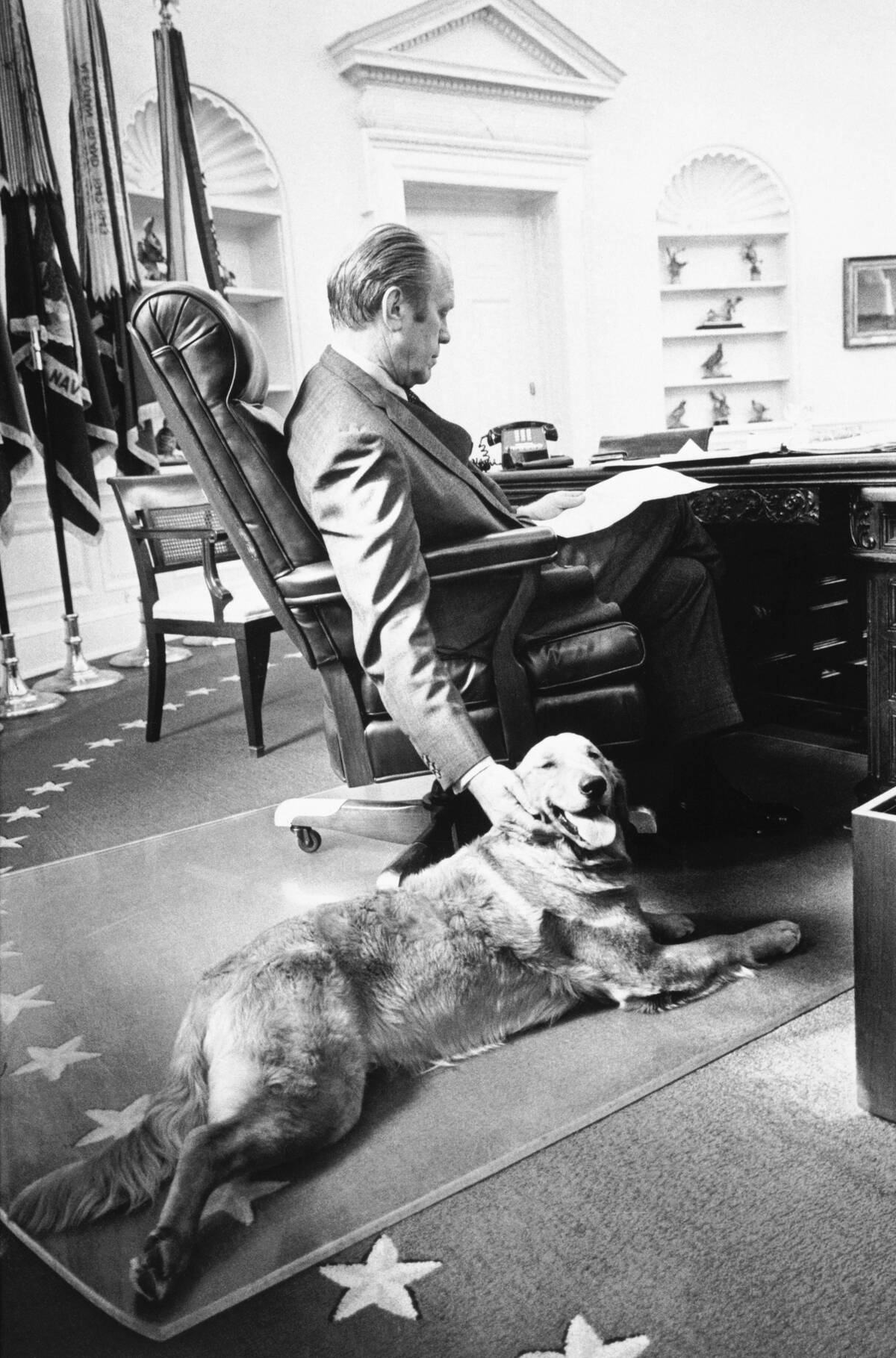
Photos of the Oval Office over the decades show the sitting president with their children, other members of their family, and even beloved family pets.
President Ford has company in this photo: his golden retriever, who was named “Liberty.”

